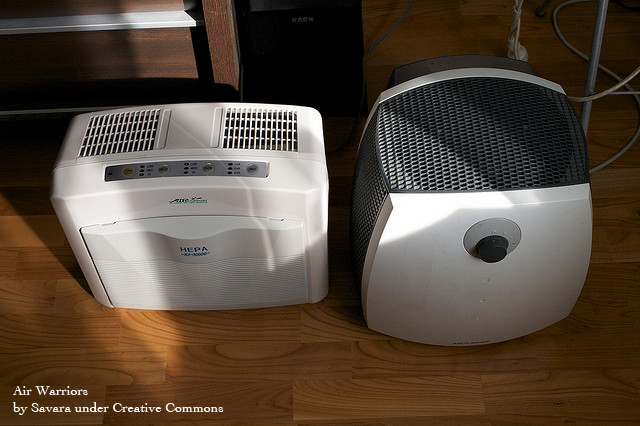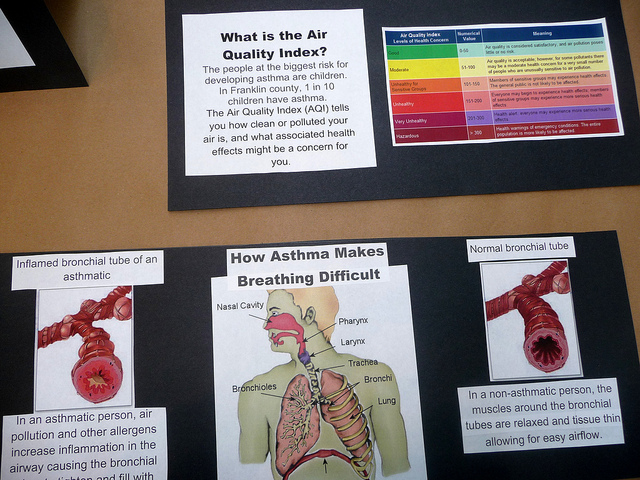Tag Archives: Air Purifier
Things We Like: Clean Air In The Bedroom
Post by Kyle St. Romain.
I recently spent a small fortune on an arsenal of air purifiers for my apartment on account of the air quality being noticeably unhealthy. I don’t know how the air got so bad, but everyone who stays here, including myself, complains of something air/allergy related.
I did some research on indoor air quality, and learned about the immediate symptoms of poor air (eye irritation, headaches, dizziness, and fatigue) as well as some of the long-term side effects (respiratory disease, heart disease, or cancer). The EPA has conducted a number of studies on indoor air quality and offered suggestions on how to improve it. Since we spend a good third of our life in our beds, the quality of air we breathe while we sleep has the biggest potential impact (in terms of overall exposure) on our long-term health.
The main way to improve indoor air quality is to introduce cleaner air into the room, which can be done in one of two ways: opening a window and letting the crisp mountain air in, or turning on an air filter, which simulates the effect. Since my apartment is located directly above the train tracks and is surrounded by interstate highways, the outside air probably isn’t much cleaner than the dirtiest of my indoor air, so I had to go with option two.
Having conducted many hours of research on air purifiers, I want to share with you the results of my research—especially now that I have had an opportunity to test a number of these units first-hand.
There are a couple basic things you can compare all air purifiers by:
Filter Type
Almost every air purifier you’re going to look at will come with a HEPA filter. HEPA stands for High Efficiency Particulate Air, and just means the filter is able to trap very small air pollutants without causing too much strain on the motor. In addition to HEPA filters, some air purifiers come with activated carbon to remove smells, UV lights to kill viruses, mold, and bacteria floating in the air, and a variety of other pre-filters to help prolong the life of your HEPA filter (which is usually the most expensive one to replace). The type(s) of filter(s) you get depend on your needs; however, HEPA is usually sufficient for most applications.
Clean Air Delivery Rate (CADR)
CADR tests are conducted by the Association of Home Appliance Manufactures, and measure a unit’s effectiveness for three different pollutants: tobacco smoke, dust, and pollen. Essentially, CADR measures how effective a particular air purifier is at cleaning the air of a given area (about 1,000 cubic feet) in terms of cubic feet per minute. All else equal, you want to aim to get a unit with a very high CADR.
Filter Replacement Cost
One of the biggest issues with air purifiers is the cost of filters. When comparing units, you want to judge both the price of the filter and the recommended time between changes. For example, Austin Air claims their filters can last up to 5 years, but cost $165/filter for the smaller ones. On the other hand, Blue Air filters for a similarly sized unit only cost $50 to replace, but only last up to one year. Also, the actual time between replacing your filters will depend on how hard the filter has to work to keep the air in your home clean.
Noise
Depending on where you’re planning to operate your air purifier, noise may be even more important to you than some of the other features a unit may have. It’s hard to know how noisy a unit is until you plug it into your own home, but a lot of manufacturers will let you know decibel levels associated with each setting. This is a factor that is especially important when considering a unit for your bedroom. While some people like a bit of background white noise, some people prefer absolute silence. If you’re the kind of person who likes to hear the sound of the fan spinning as you go to sleep, don’t worry about noise too much.
I purchased three different air filters to keep my apartment clean: the Austin Air Health Mate Jr, Honeywell 5250-S, and the Blue Air 203. For the money, I like the Honeywell even though it can be a bit loud on its highest setting, is the largest of the three units, and has a bright blue light which can affect sleeping if you like a dark room. Next would be the Austin Air since it is very small, very quiet, and seems to have the most robust filter. Interestingly, it is the air purifier choice of FEMA. Next is the Blue Air, which I think is overall the second best unit, but is much more expensive than the Honeywell. I’ve also used the Alen Air T300, which is also a very good unit, but the filters are expensive to keep up with.
So there you have it, a quick run down of how (and why) to select an air purifier for your bedroom. I got three, so I can have them running throughout the whole house and couldn’t be happier. There really is a noticeable difference in how much better you sleep and feel in your home.



